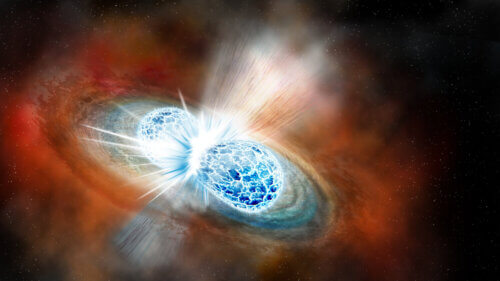When LIGO and Virgo observe more black star collisions, they may observe many small black stars. If that happens, we may have to examine this idea of darker matter more carefully

Imagine you are a neutron star. You float happily in space, already too old to fuse nuclei in your core, but the quantum pressure on your neutrons and quarks easily keeps you from collapsing under your own weight. You are expecting a long stellar retirement of gradual cooling. Then one day a small black hole hits you. This black hole only has the mass of an asteroid, but it makes you unstable. Gravity crushes you as the black hole thoroughly consumes you. Before you know what's happening, you've turned into a black hole.
According to a new study published in Physical Review Letters, this scenario may occur occasionally, and it could explain the smallest dark matter and black holes we've seen.
The mass of neutron stars is usually between 1.5 and 2 solar masses. They form because the quantum pressure of the neutrons is strong enough to balance the gravitational weight of the star. But there is a limit to the mass a neutron star can have. It is known as the Tolman-Oppenheimer-Volkoff (TOV) limit. This limit is difficult to calculate, but we think it is around 2.5 solar masses. Anything above the TOV will collapse into a black hole.
The idea has been proposed before, but in this study the team is investigating how it might be related to dark matter. Some astronomers have suggested that dark matter may be made from Julian black holes. If this is true, the universe must be full of Julian black holes, and collisions with neutron stars should be common. Therefore, the researchers looked at the mass distribution of known neutron stars and calculated the most likely size in solar masses of black stars. It turned out to be between 1 and 2.5 solar masses. So the smallest black star we've seen may have formed through the collision of a Julian black star.
It's an interesting idea, but the current evidence is far from convincing. But when LIGO and Virgo observe more black star collisions, they may observe many small black stars. If that happens, we may have to examine this idea of darker matter more carefully.
To the article on the Universe Today website
More of the topic in Hayadan:
